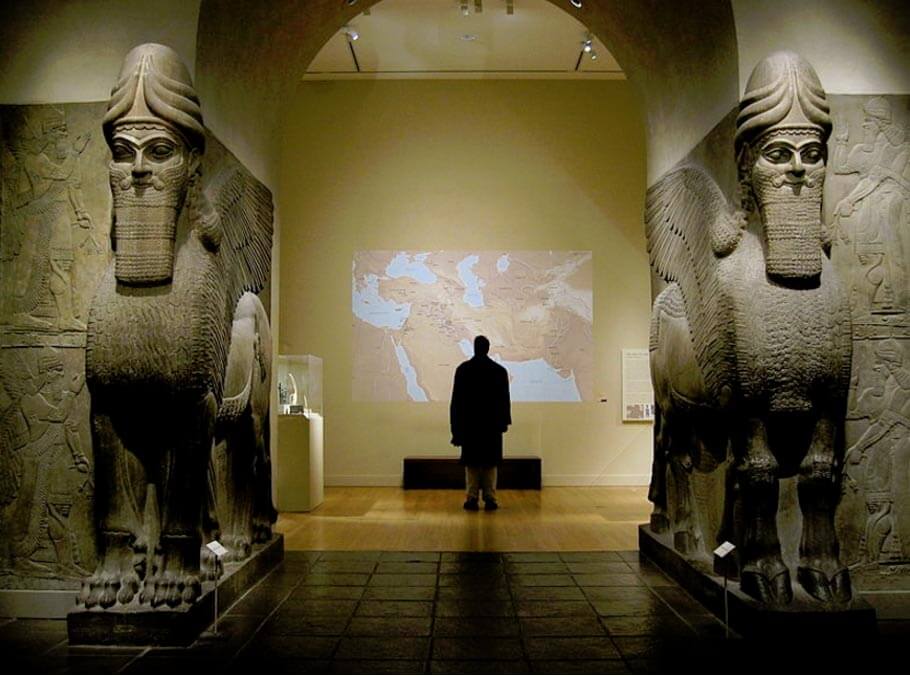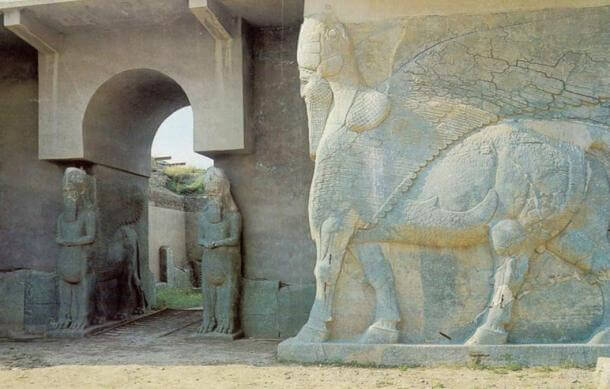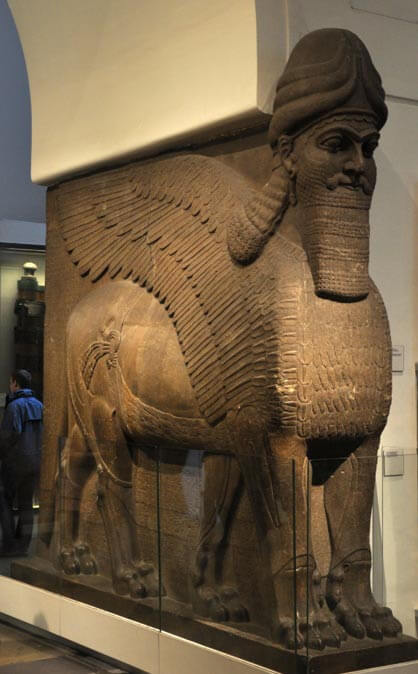 4
4

Examining the pyramid with the mions
 19. 04. 2024
19. 04. 2024



 4
4

 19. 04. 2024
19. 04. 2024

 1
1

 17. 04. 2024
17. 04. 2024
 6
6

 16. 04. 2024
16. 04. 2024
 23. 11. 2020
23. 11. 2020

Lamassu are bulls or lions with human heads and eagle wings that once protected the cities of ancient Mesopotamia. They were believed to be very powerful beings and served both as a clear reminder of the king's sovereign authority and as symbols of the protection of the people.
The most famous giant statues of Lamassus were unearthed on the sites of the Assyrian capitals founded by King Ashururnasirpal II (reigned between 883 - 859 BC) and King Sargon II (reigned between 721 - 705 BC). The winged creatures from Nimrud, Iraq, the ancient city of Kalch, also came to public attention when they were destroyed by Islamic State fighters in 2015. Other statues of these mythical creatures have also been found in the ancient city of Dur Sharrukin (today's Chorsabad in Iraq).
Every major city wanted Lamassu to guard the gates to his citadel, while another winged creature guarded the entrance to the throne room. Moreover, it was the guards who inspired the armies to defend their cities. The people of Mesopotamia believed that Lamassu was deterred by the forces of chaos and brought peace and tranquility to their homes. Lamassu in Akkadian means "protective spirit."
Lamassi often appear in Mesopotamian mythology and art, and the first records of them date from around 3000 BC They are also known as Lumassi, Alad and Gray. Sometimes they are also portrayed as a female deity, called "Apasu," but most of them are typically a male head. As celestial beings, they are associated with Inara, the Hittite-Churit goddess of wild steppe game and the daughter of the storm god Tesub, who is similar to the Greek Artemis.
In the work of Gilgamesh and the myth of the creation of Enum Elish, both Lamassu and Apasu (Inara) are symbols of the starry sky, constellations and zodiac. In the Epic of Gilgamesh, they are considered protective creatures because they include everything living. The cult of Lamassus and Gray was very common in ancient households from the time of the Sumerians to the Neo-Babylonian period, and these beings began to be associated with many other protectors of kings from various cults. The Akkadians associated Lamassa with the god Papsukkal (messenger of the gods) and the god Ishum (god of fire and messenger of the Babylonian gods) with Gray.

Mythical Lamassa: Stunning protective symbols of Mesopotamia
Lamassu were the protectors not only of kings and palaces, but of all people. People felt safer knowing that their protective spirit was near, so they depicted Lamassa on clay tablets, which were then buried under the doorstep. The house that had its Lamassa was believed to be a far happier place to live than the one that did not have this mythical creature.
Archaeological excavations show that Lamassu was important to all cultures inhabiting Mesopotamia and surrounding areas. As already mentioned, the Lamass motif first appeared in the royal palaces during the reign of Ashurasirpal II. in his Nimrud headquarters and disappeared after the end of the reign of Ashurbanipal, who ruled between 668 and 627 BC The reason why they disappeared from the buildings is unknown.
The ancient Jews were greatly influenced by the iconography and symbolism of the surrounding cultures, and therefore they also knew Lamassa. The prophet Ezekiel described them as fantastic beings created by a combination of a lion, an eagle, a bull and a man. The four gospels that originated in early Christianity were also linked to each of these mythical elements. In addition, Lamassu may have been one of the reasons why people began to use the lion not only as a symbol of a brave and strong leader, but also as a protector.

Mythical guardians who influenced Christianity
Even today, Lamassu stands proudly on guard. The oldest of these monumental sculptures carved from a single piece of alabaster are 3 - 4,25 meters high. The most obvious difference between the older Lamassus and those of later periods is the shape of their body. The former were carved in the shape of a lion, but the latter from the palace of King Sargon II have the body of a bull. It is remarkable that they are also smiling at the Sargon Lamassu. When Sargon II decided in 713 BC to establish the capital, Dur Sharrukin, he determined that each of the seven gates would be provided with protective geniuses to serve as guards. In addition to serving as guards, they were also a monumental ornament and had their own architectural function because they carried part of the weight of the arch above them.
Sargon II was very popular with Lamassa, and many statues of these mythical creatures were created during his reign. During this period, their bodies were carved in high relief and their shaping was more pronounced. The head had the ears of a bull, the face of a bearded man, and the mouth of a narrow mustache. During archaeological excavations conducted by Paul Botta, archaeologists discovered some of the monuments sent to the Louvre in Paris in early 1843.

Powerful monuments
This was probably the first time Europeans had seen these mythical creatures. At present, the portrayals of Lamassus are part of the collections of the British Museum in London, the Metropolitan Museum in New York and the Oriental Institute in Chicago. During the British Army's operations in Iraq and Iran from 1942-1943, the British used Lamass as their symbol. It is also a symbol of the United States Armed Forces based in Iraq. The Lamass motif is also popular in culture. He appears in The Chronicles of Narnia by CS Lewis, Disney's film Aladdin and other media.
By: Natalia Klimczak
Top book about lucid dreaming. This is an absolutely top book, where Waggoner's cover of the topic of lucid dreaming in a way that perhaps no other author has succeeded in doing so. The fact that the English version, which is now on sale, is already the ninth edition, speaks for itself. I hope that he will meet with similar success in the Czech Republic as well, because he really deserves it.

Lucid Dreaming